First, the ‘builder’s grade’ beige, then everything gray, and now the off-whites and greige have made it to the trend of being one of the most definite color options for your home.
The White Duck Sherwin Williams is here to add much-needed warmth and depth to your home because that’s the beauty of neutral colors. It has a creamy texture but not the usual yellowish cream, rather one with a greige touch to it. SW 7010 is a light tone warm neutral color and is one of the top choices among all the available off-whites and creams.
We understand that it’s not easy to choose the perfect paint color for your interior house project; thus, we are here to help you with the trendiest color. The SW White Duck review will give you an overview of how well this goes with your place, along with certain other comparisons.
All About Duck White Sherwin Williams
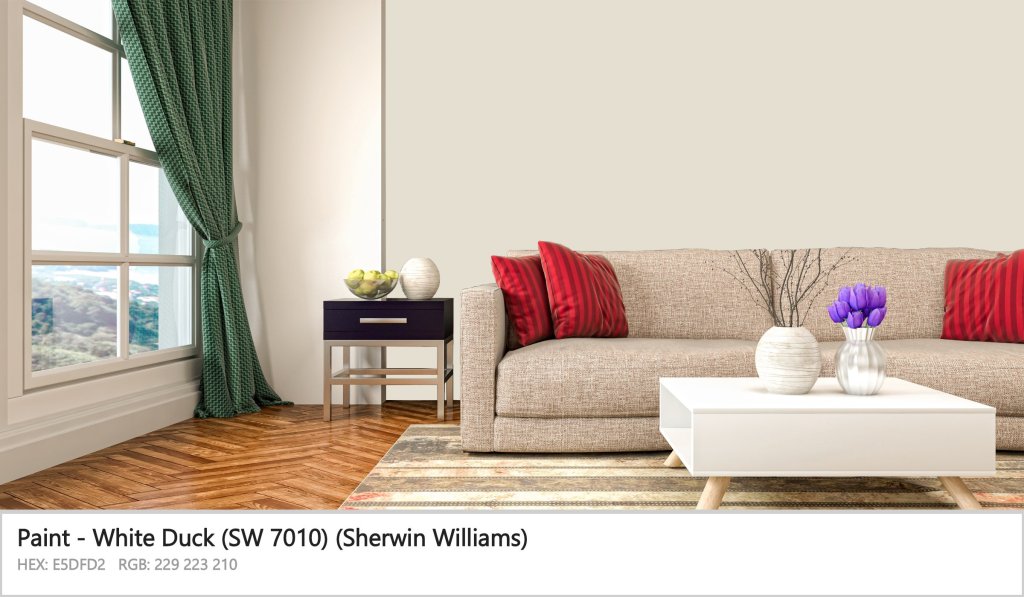
Duck White Sherwin Williams is a neutral pastel color with greige touch to it. The yellow creamy content is kept natural not to make the place cakey with its effect. The light color makes the place airy and spacious, while the warmth of the color binds the place, making it a cozy stay.
1. Undertone – Duck White Sherwin Williams
Duck white sherwin williams is a golden approach to add warmth without much obvious yellow tone. It is a neutral color with neutral undertones and a subtle splash of yellow.
This means the result has a creamy white finish with hints of greige reading through it. But wait! Do you know what greige is? As the name suggests, and as you may have assumed by now, it’s somewhere between gray and beige, thereby holding up to the previous and current trends.
Don’t worry; it will look nothing like the traditional cream paints but rather a versa.
2. How Does Light Affect Color?

Paints and light go hand in hand. The lighting of a space has the power to highlight and de-tone a place’s vibe. A place with good availability of natural light will brighten the place coherent with the paint, whereas insufficient lighting can make the place shady with a dingy feel.
Duck White Sherwin Williams generally appears light and bright but might turn a bit dingy in a dimly lit room. Here’s an idea of how it will read in different compass directions.
In the East, the morning light will make the shade read warm, and as the light bends by the day, SW Duck White works its wonders to warm up the room. In the West, the orange-red light makes the shade read the warmest. In the morning, the color reads greige on the wall, and by the evening, it appears beige. In the North, the cool incoming light will make the color lean towards the greige side. However, the inherent tone of the color will warm up the room. And, in the South, the bright warm light cuts out the warmth of the paint and makes the color read cream or beige in the lighting. Avoid painting in this direction with SW 7010 if you are not a fan of creamy walls.
However, if you are still confused and would like to know more about it, go through our detailed brief on this element to avoid some of the most common mistakes that people generally make.
3. Duck White Sherwin Williams Tone – Warm or Cold?
Duck White Sherwin Williams is a beautiful warm- neutral-toned color with a combination of greige and cream. It also has gray shades to its tone. While the neutral color makes the place look elegant, the warm tones bind the place for intimate celebrations.
A budding teenager or a metalhead would sulk in a place like this and thus be a variety of your choices before you make a decision. And for that, here are the technical specification of the paint color.
4. Light Reflectance Value
Light Reflectance Value is of utmost importance to the designers, but you should also know its significance. LRV is a measure of light reflected from a surface when illuminated by light, be it natural light or artificial light. LRV of any color is fixated on its paint chip or sample. On a scale of 0-100, the higher the LRV, the lighter the shade of color, and vice versa. This means 100 is the purest white and 0 is the purest black.
The LRV of SW 7010 is 74, which parks it in the off-white range. It holds itself better than the general off-white colors in a room but might wash out if not adhered to the lighting guidelines.
5. RGB Value
RGB stands for Red, Green, and Blue. Each color measures 0 to 255, quantifying the density of particular color in the overall color content. These parameters determine the combination of primary color in the final color.
The RGB for SW 7010 is 229, 222, 210, which signifies the content of red is in maximum proportion.
6. HEX Code
HEX stands for Hexadecimal. Hex codes are hexadecimal codes for identifying the exact color. It is made with Red, Green, and Blue in a particular shade of color. For every specific color, a digital code is generated, which the designers and paint specialists use for accurate color recognition. The HEX code of SW Duck White is #e5dfd2.
With this, we have detailed almost all the technical aspects associated with this shade. From here on, we will proceed toward the most insightful segment ahead to look at how this color will look in the different parts of the house.
Application of Duck White Sherwin Williams
1. Living Room
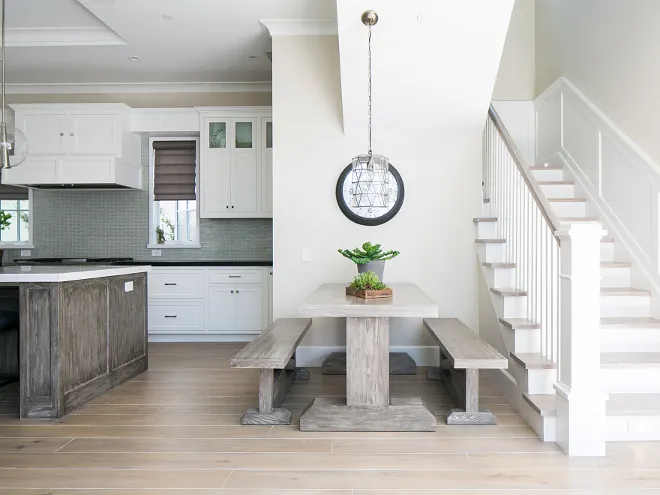
You can either keep your living room a neutral shade or a combination of bold and soft; SW Duck White works great for both. It is a warm neutral color and thus is great for a neutral shade and can be paired with dark accent furniture and TV cabinets. It goes well with hardwood flooring as well. Painting your fireplace with this color will be your best decision.
2. Kitchen
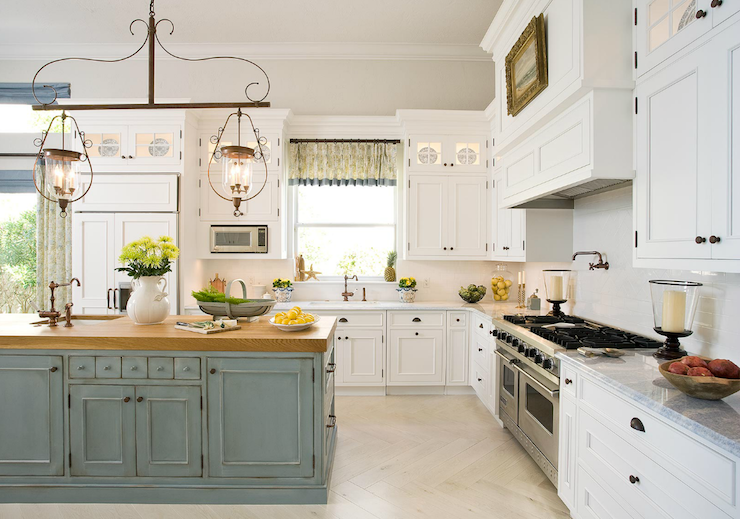
The SW Suck White gives a terrific farmhouse feel when applied in the kitchen. The great lighting, the wooden accents, and the stainless steel all add to the glow of the color. But this color works well in traditional and transition homes as well. Paint the walls of the kitchen with this color and the rest of the objects with dark bold colors or vice versa.
3. Bedroom
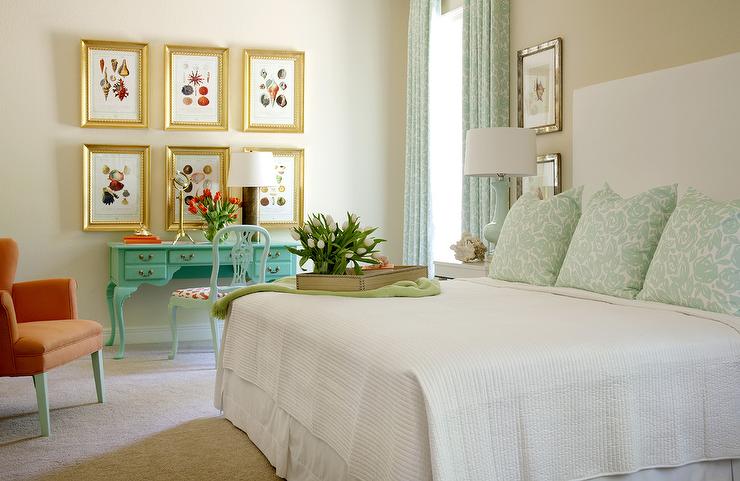
Flat paints and bedrooms are the greatest combo. Your bedroom gets the perfect soft touch with this cream duck white paint. Its greige tone pairs well with the wooden finish, neutral closet, and statement mantlepiece. Cover the mattress with soft-colored bedsheets and add more pastel colors to the room to elevate the overall look of the duck white Sherwin Williams.
4. Bathroom
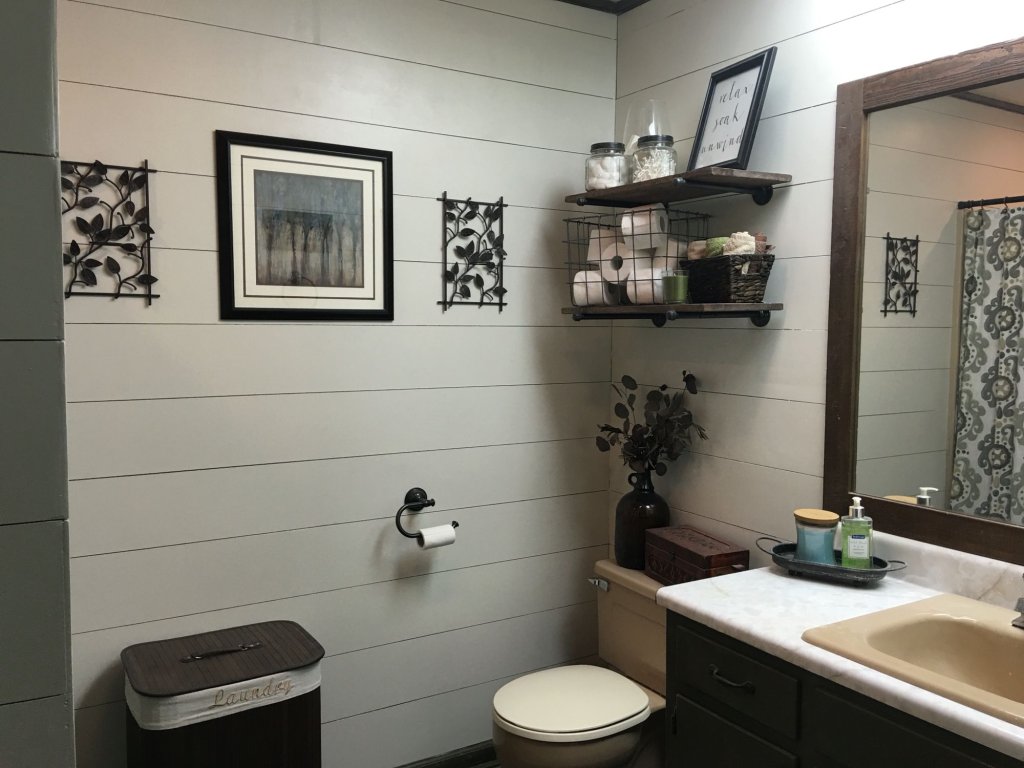
Make a daring move by painting the floor in SW Duck White. As weird as it sounds, it will look all the more stunning. Paint the tiles in the soft off-white color and elevate the place with fragrance; you will love it. In case you paint the walls with this color, accent the bathroom with black metallic taps and picture frames. The mesh basket and laundry bag can also be used in a matt black color.
5. Exteriors
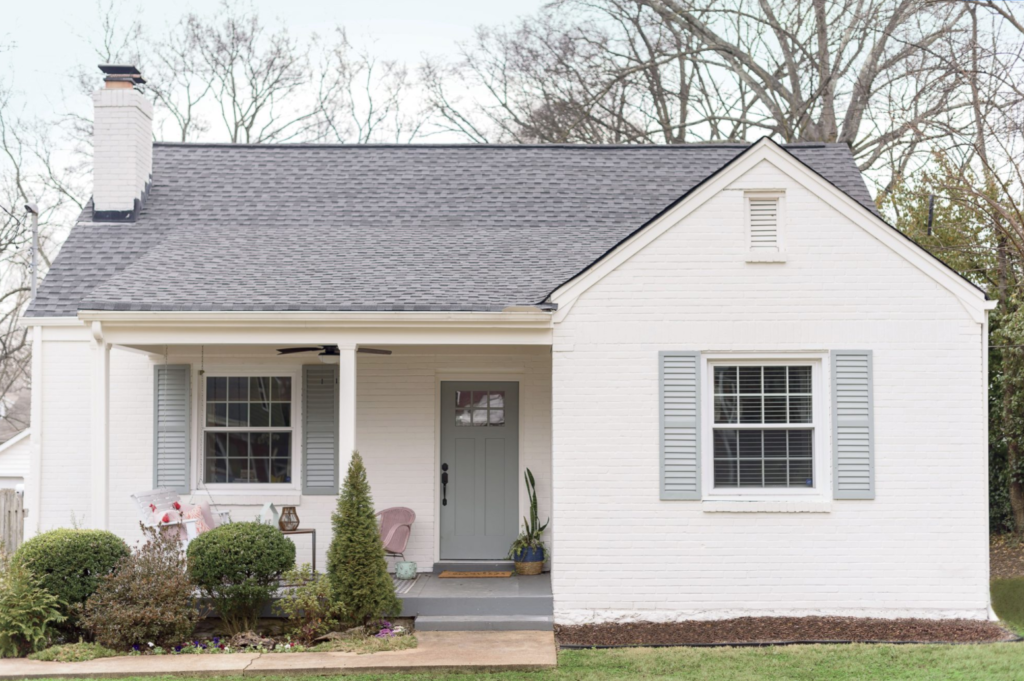
SW Duck White is a warm, welcoming color and makes your place stand apart. Neither stark nor too creamy, it is just the right color with warm yellow lights on the front porch. If you are still not sure, check out the beautiful SW Duck White home. Decorate the front of your home with beautiful seasonal plants and statement trees. Colorful flowers will blend well with the beautiful white paint.
Coordinating Colors of Duck White Sherwin Williams
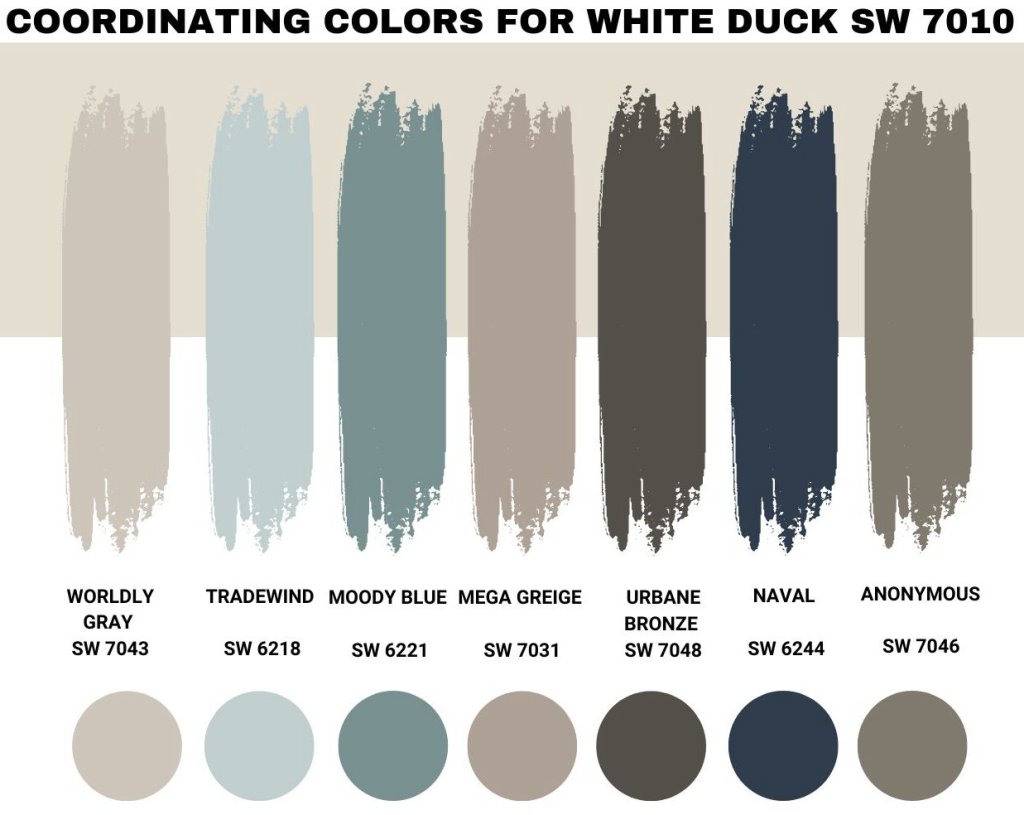
Duck White Sherwin Williams is a versatile cream color that blends well with various other colors. You can pair it with another gray color with similar depth and blue-green undertones or particularly with green undertones. Navy blue and other dark accent colors are quite a match for SW Duck White.
To be specific, you can go for the colors like SW Mega Griege(SW 7031), SW Worldly Gray(SW 7043), SW Moody Blue(SW 6221), SW Naval(SW 6244), SW Urbane Bronze(SW 7048), SW Anonymous(7046).
If you wish to have a combination of complementary colors, look at the opposite end of SW Duck White in the color palette; that is where it sits. It has a hex value of #1a202d, which has no official name as of now. The closest name of this color we got hold of through sources is ‘Eigengrau.’
1. SW White Duck vs. SW Pure White
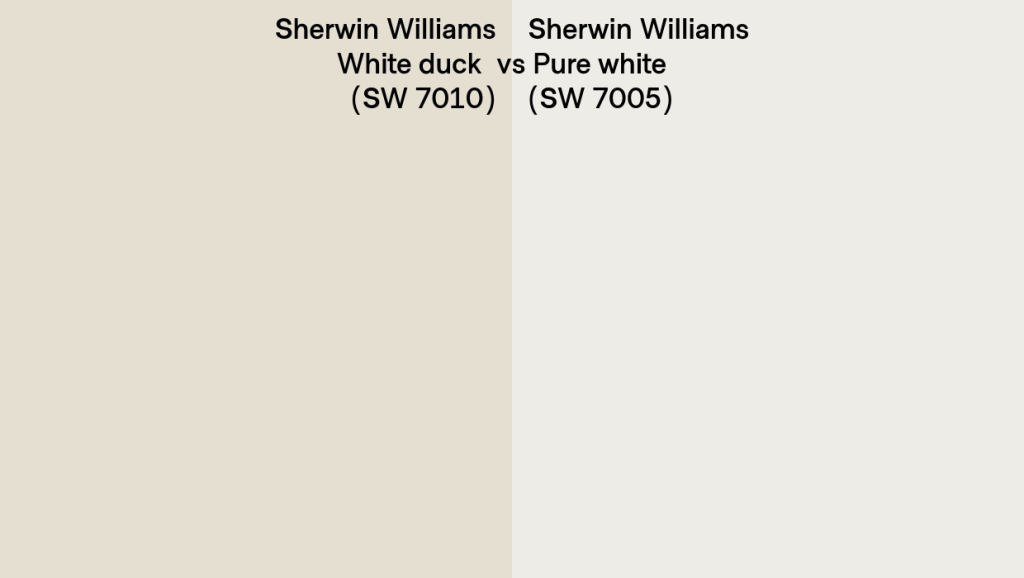
Pure White is not ‘true white.’ Pure white has an LRV of 84, whereas the LRV of the latter is 100%. Pure white is an off-white paint that sits on the higher end of the palette, whereas Duck white sits lower to it. Due to its higher LRV, pure white reads a bit black on the walls, whereas Duck white, as you know, reads neutral with hints of yellow to it.
2. SW White Duck vs. SW Snowbound
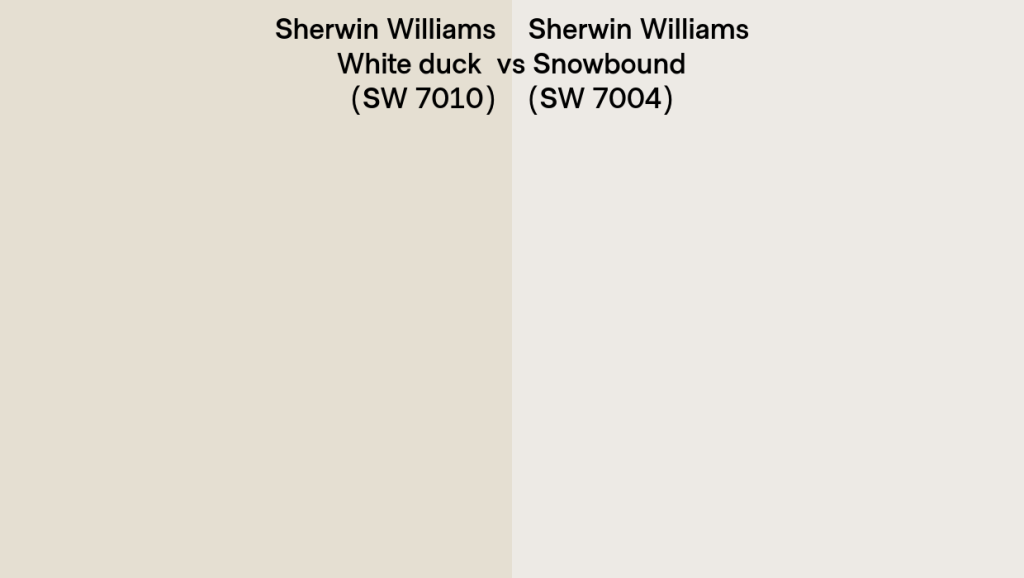
There’s not much of a difference between white duck and Snowbound other than their reflectivity and undertones. Snowbound is a lighter color and has a violet-pink undertone display, unlike the gray, yellow undertone of white duck. Both the colors have a yellowish tone that provides warmth to the neutral shades and gray to balance out the warmth.
3. SW White Duck vs. SW Natural Choice
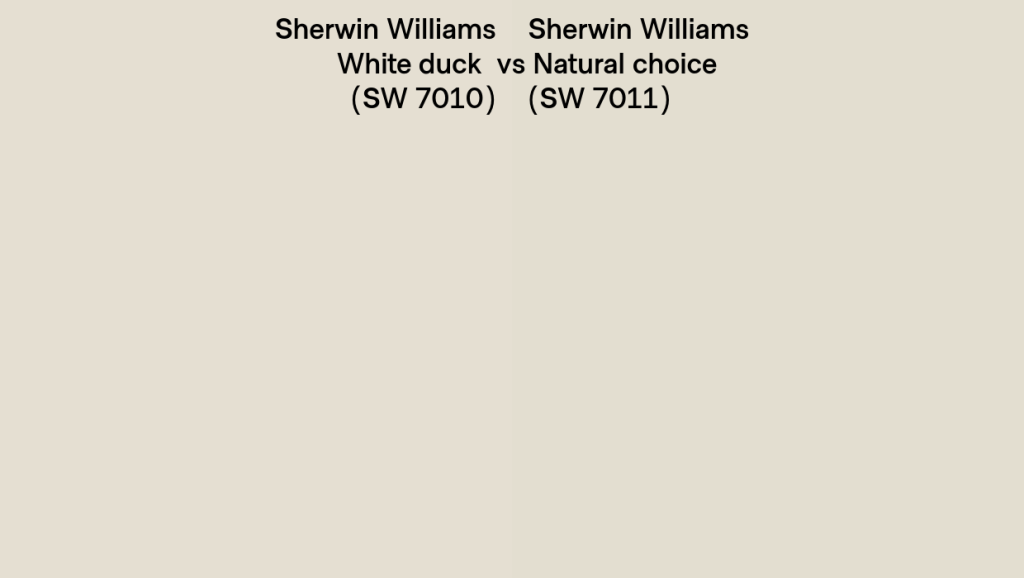
The SW Natural choice is a slightly more saturated color than the two. While the White duck sits in the middle of the yellow hue family, the natural choice sits a little lower. Both the colors tend to read yellow on the walls and take the help of a gray undertone to balance out their warmth. But, be vary of the lighting around the painted place. Both make an attractive backdrop for various decor.
4. SW White Duck vs. SW Shoji White
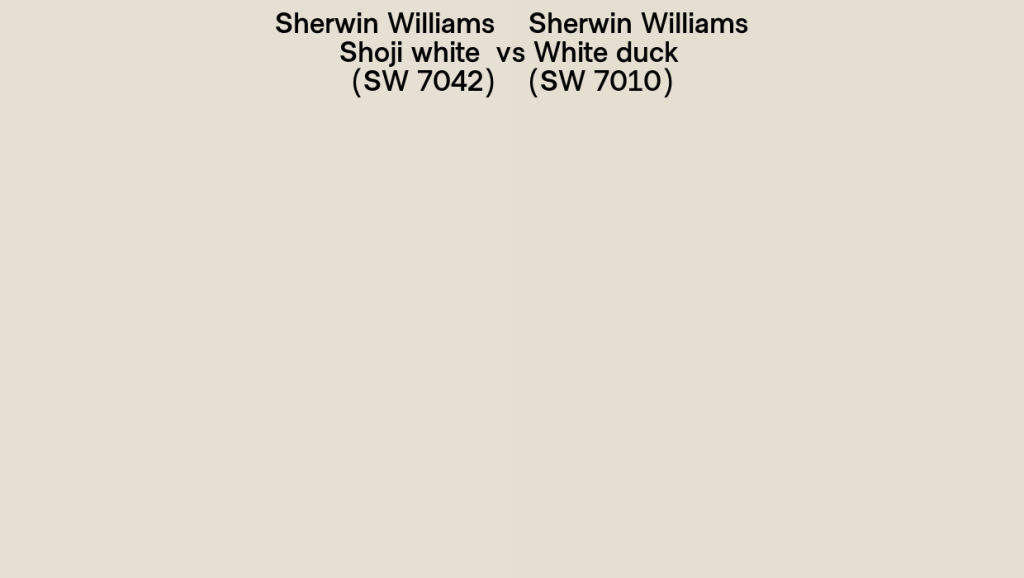
Both colors reflect the same amount of light with an LRV of 74. Both of them are warm neutral colors that make your place soft and cozy. But, the comparison lies in the undertone. Unlike White Duck, Shoji White has a bit of a green undertone, which can only be read in certain lighting conditions. SW White Duck and SW Shoji White combine gray and cream tones to make your house a stress-buster place.
5. SW White Duck vs. SW Alabaster
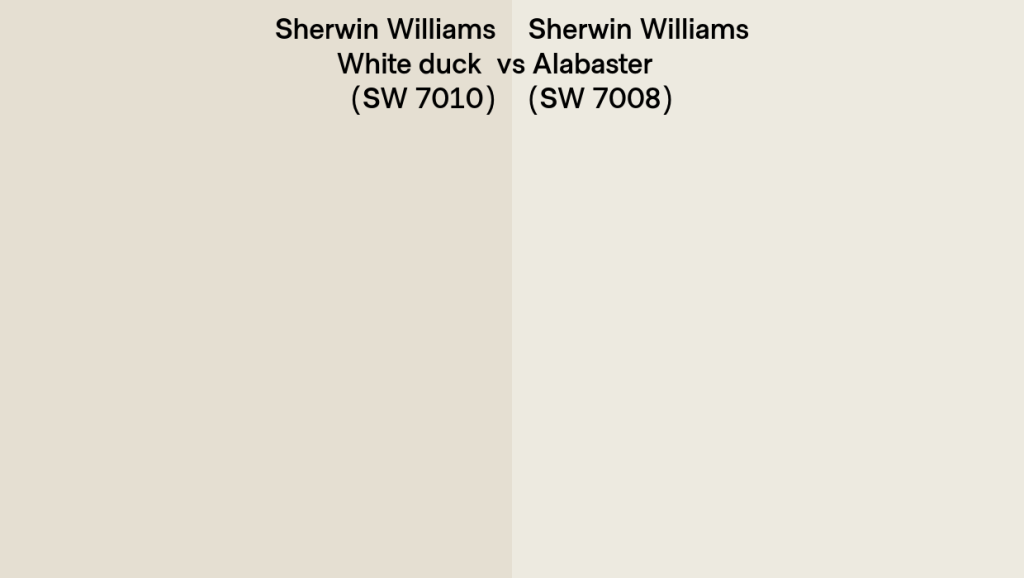
Both the colors fall in the off-white range of Sherwin Williams providing amazing warmth through their yellow hue. However, SW Alabaster differs in its reflectivity. It is a lighter shade with an LRV of 82. While both colors perform similarly in a dark room, alabaster performs slightly better in terms of reflectivity. It absorbs less light and thus is suitable for dark rooms, unlike the SW Duck White.
6. SW White Duck vs. SW Oyster White
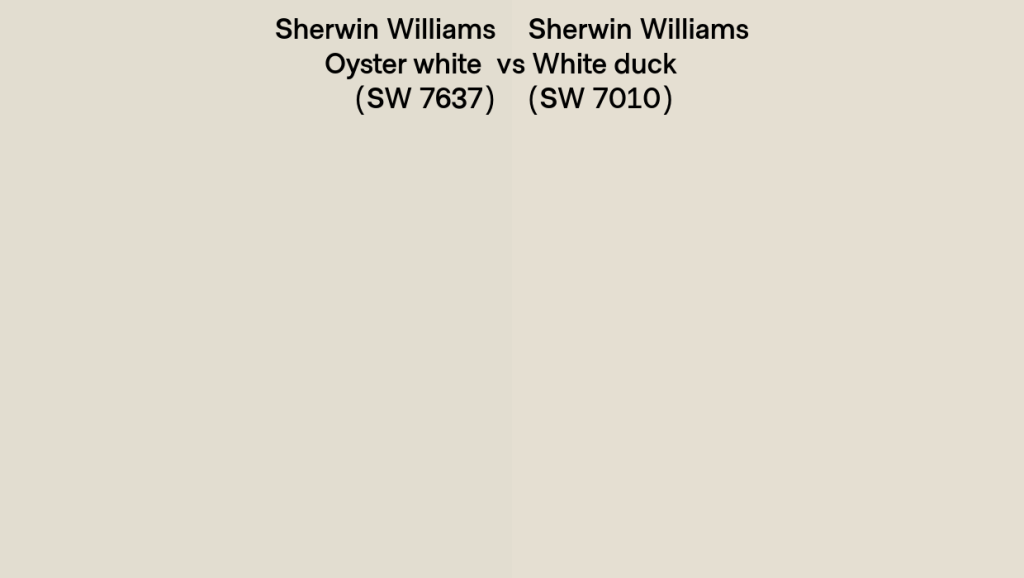
Oyster White is slightly cooler than its counterpart, meaning it works better in a south-facing room. Both the colors belong to the off-white range but, to be specific, oyster white sits at the borderline. Unlike the greige and cream tones of white duck, oyster white leans more towards the greige side of the scale.
Overview
The Duck White Sherwin Williams is a versatile cream color with warmth to its tone. It makes your place comfortable to rest and enjoy soft music and ball dance with your loved ones. The neutral paint is perfect to align with bolder accents.
Due to its versatility, it can blend with a range of cool blues, greens, and other colors, providing you with a vivid range of options to decorate your home. Balance out its warmth with other cool colors, and you will never want to rip off the beauty.
Choose your preference wisely from the above available options, and let us know your thoughts on the SW 7010. Happy Painting!

